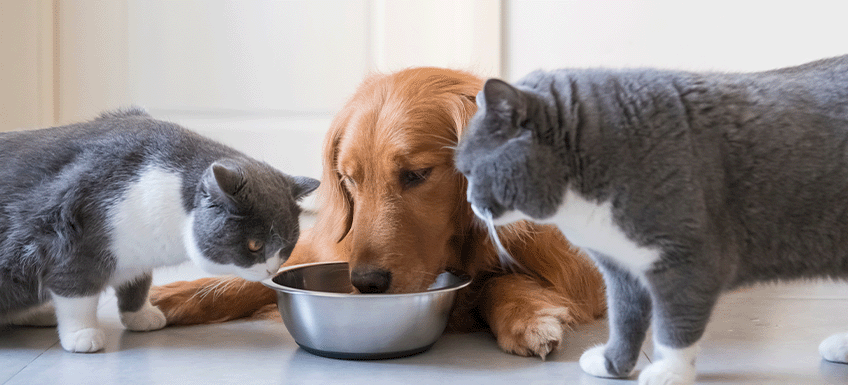
How to Take Control of Your Pet's Weight
Health and Wellbeing
Diet and Nutrition
Dog
Cat
16/05/2023
Though you may think nothing of your pet’s extra weight, overweight pet's is an increasing problem. Obesity in animals can cause a variety of health-related issues and may even shorten the lifespan of your beloved pet. Fortunately, there are steps you can take to become informed on the issue and find a healthy way to get your pet’s weight back on track.
How do pets become overweight?
Pets become overweight for a variety of reasons, including consuming too many calories, not enough exercise, feeding too frequently or consuming table scraps!
Treats can also contribute to the problem with many dog and cat owners over treating their pets with multiple treats per day.
Nature vs. Nurture
Most pets are always happy to eat and have a difficult time controlling themselves when their owners offer them food and treats.
Some pet owners feel that feeding their pet treats or several meals a day helps them bond and shows their pet that they are loved. But in actual fact, feeding too much or giving them the wrong kinds of food can be harmful and cause long term problems.
Leaving food down all the time for your pet or giving them food designed for humans, can perpetuate obesity and lead to health problems. Your pet’s ideal weight will depend on its breed, lifestyle, and underlying health conditions, your vet can help you assess your pet.
The impacts of obesity on your pet
Obesity can affect the quality of your pet’s life in many ways. A variety of adverse health conditions, including hip dysplasia, osteoarthritis, pancreatitis, diabetes, cardiovascular disease and a shortened life expectancy, are associated with overweight pets.
Getting back on track with your pet's weight loss
If your pet is suffering from obesity or you believe they are overweight, the most important thing to do is discuss an appropriate weight loss program with your vet.
Your vet can determine your pet’s exact energy requirements and can tailor a feeding protocol. In most cases, a successful weight loss protocol involves a reduction in caloric intake along with an increase in physical activity.
Your vet may suggest prescription weight loss foods that have lower fat and calories or feeding your pet a normal sized meal in small increments to slow down their eating and allow them to feel satisfied. Avoid refilling your pet’s bowls even if they eat quickly and be sure to properly measure out your pet’s meals. Overfeeding your dog or cat by even a few extra pieces of kibble or scoops of wet food will make a difference over time.
Changing your pet's reward routine
Food-based rewards are generally a huge part of training for dogs. While giving bite-sized treats can be effective when training a puppy, providing positive reinforcements through rewards other than food is essential. Reduce the amount of food given during meal time to accommodate treats given that day.
Incorporating more exercise into your pet's day
Make sure you are aware of any possible medical conditions before starting a vigorous exercise regime with your dog. Active play, food dispensing toys, and an increase in walking can all be part of a fitness program for your pet. Adding a vertical space to your cat’s environment to encourage climbing and jumping can be helpful, as can planning doggy play dates in a nearby park.
It may seem like an overwhelming task, but by making small changes to your pet’s diet and exercise routine, you’ll see an improvement in their overall health and happiness.